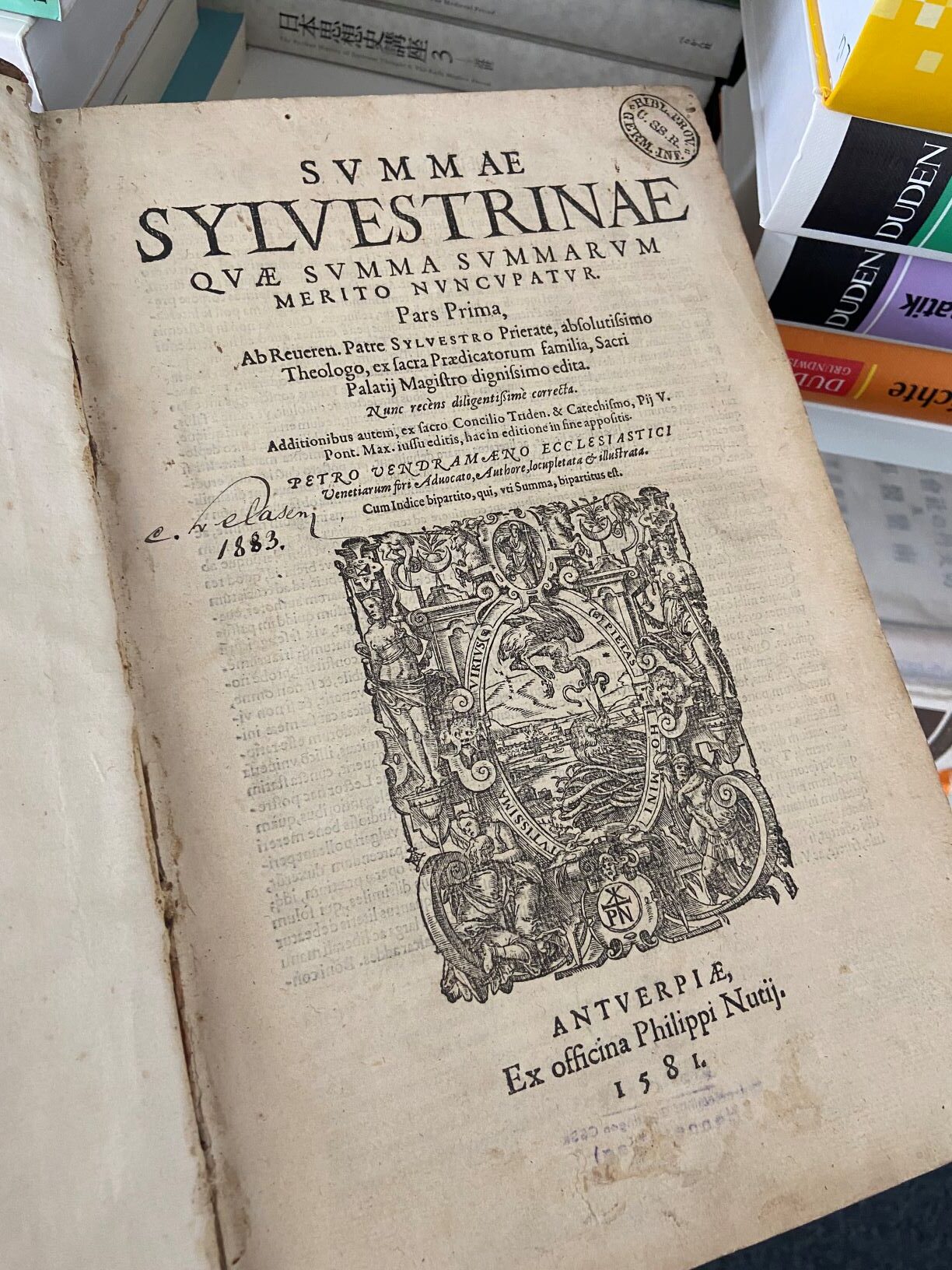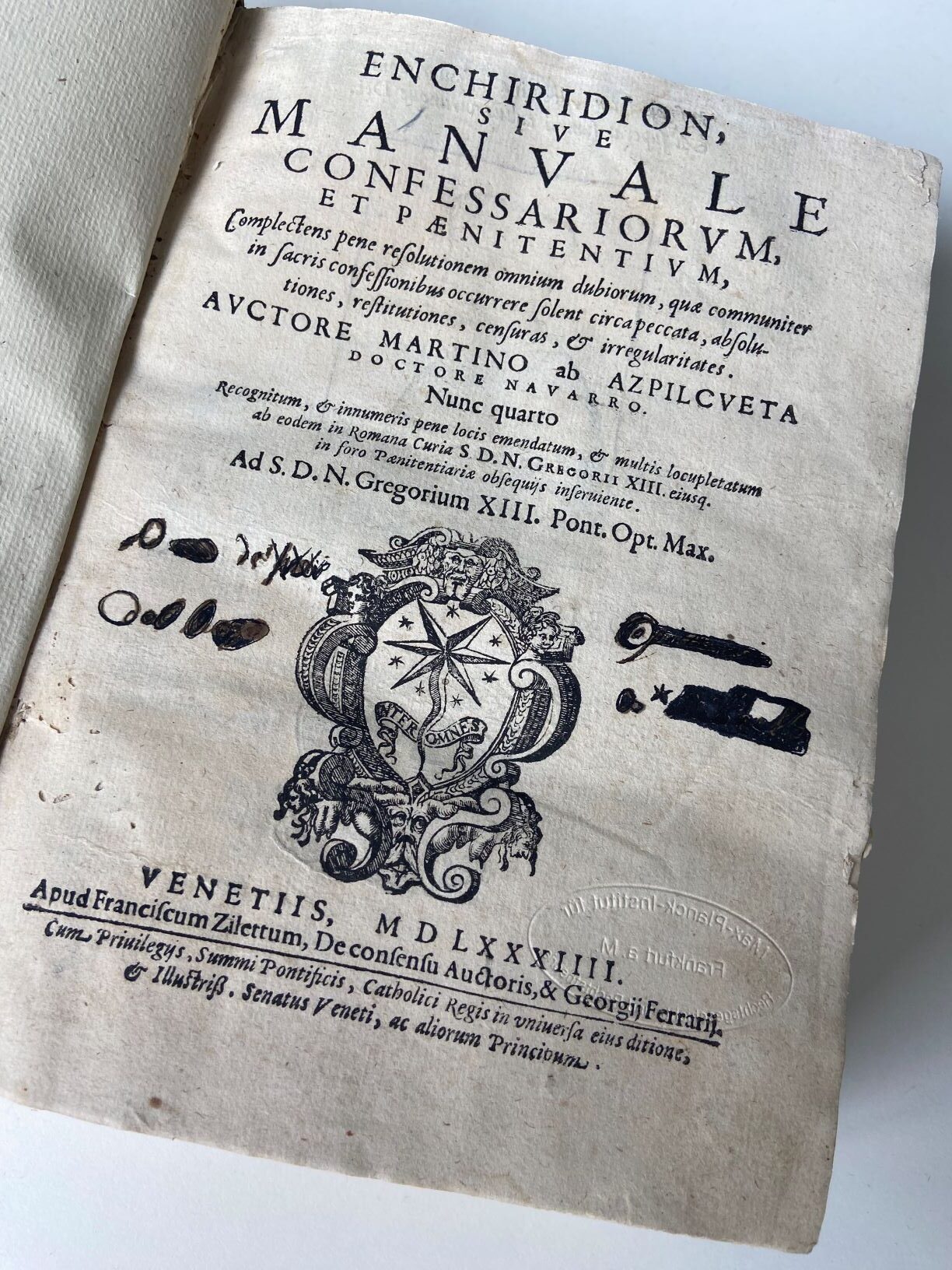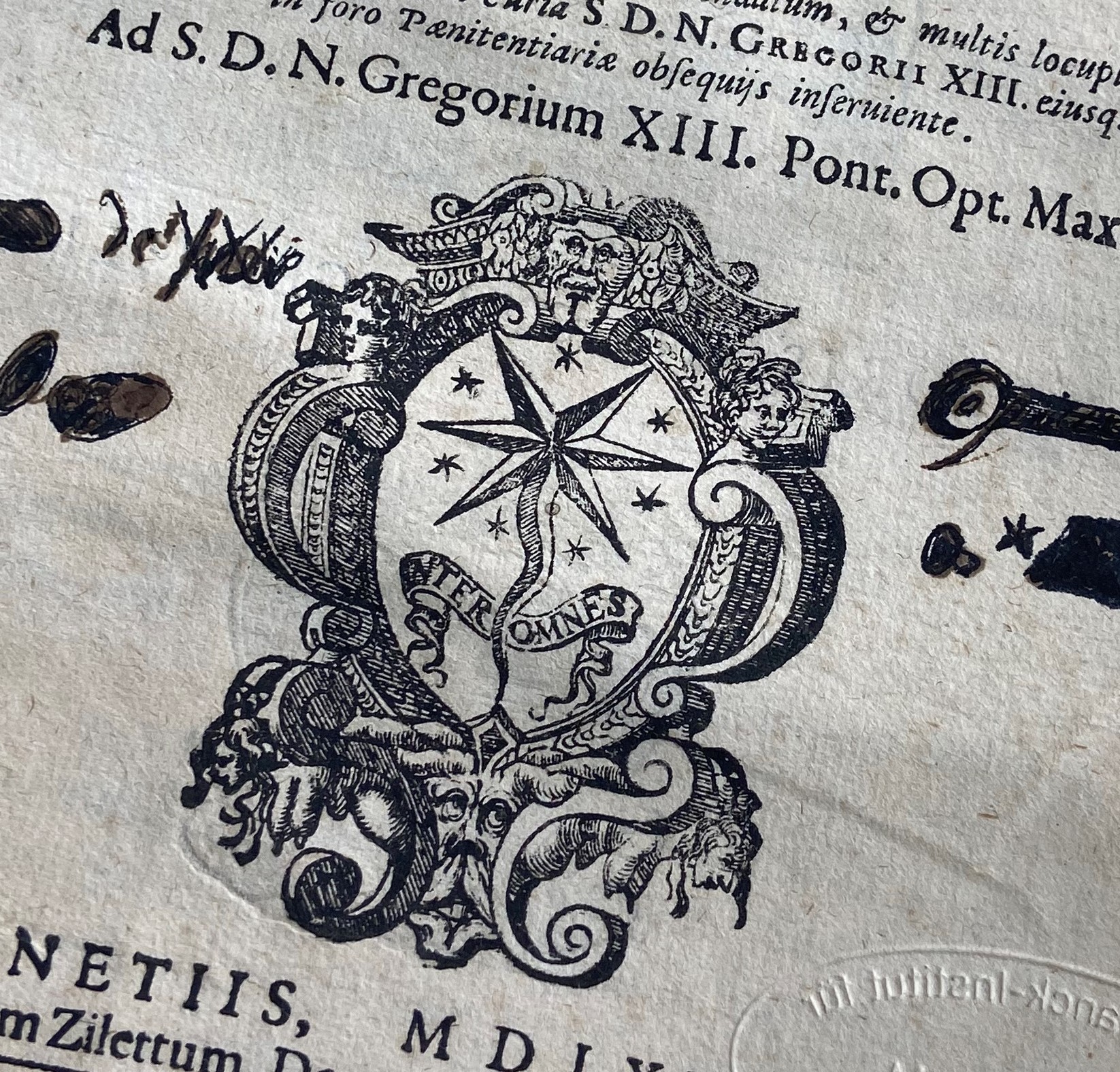It has been about a decade since I first came into contact with a casuistical text. It was a theological miscellany, as archives often refer to the mishmash of opinions on dubious moral issues (the so-called “cases of conscience”). In my case, it was a miscellanea on cases from various areas of the Portuguese empire in Asia and its neighbouring regions: India, China, Japan, the Moluccas, and Malacca. Written sometime in the late sixteenth- or the early seventeenth-centuries, the so-called Codex 805 has been a well-known source since at least the 1960s among the small number of scholars familiar with theological texts produced in the Estado da Índia. Drawing mostly from law and theology, the opinions were authored by a number of Jesuits such as Alessandro Valignano, the Visitor of the Indies and Japan; Fernão Perez, a Portuguese theologian at the University of Évora; and Antonio de Quadros, one of the first and foremost influential provincials of the Society of Jesus in India. The codex itself was seemingly some sort of notebook or compilation of casuistical opinions that local students and teachers could refer to whenever facing doubts on local issues such as contracts, trade, slavery, and the sacraments. Of course, the reasons behind the codex being taken from Asia to Europe, kept in the library of the Alcobaça monastery, and finally entering the Torre do Tombo at some point of the twentieth century remain mysterious.
Among the various authors of the manuscript, one stands out: Francisco Rodrigues, SJ (1515-1573). Known at the time as “the Lame” or the “Bachelor of the Donkey”due to a physical disability that prevented him from walking (thus rendering him dependent on his burrico for moving around), Rodrigues arrived in Goa in 1556. There he taught cases of conscience at the College of São Paulo, heard confessions of powerful elites, served as provincial of the Society of Jesus, and exerted a profound influence on the decisions taken by the local provincial councils. A list of resolutions he put forward regarding the moral challenges faced by missionaries in China and Japan was what drew my attention to this character, as he addressed the issue of the enslavement of Japanese women and the Jesuit priests’ involvement in the trade—which was the topic of my doctoral dissertation. Beyond the glimpses the text offers to specific trading practices, Rodrigues’ citations provide evidence of the richness of the library of the Jesuit school.
Fascinated by the possibility of writing a list of the collections held at the library of the College of São Paulo from the mentioned authors, I soon began to compile a list. The most obvious authorities were, of course, easy to pinpoint: St. Thomas Aquinas’ 2a 2ae, Summa contra Gentiles, and so on; Silvester Mazzolini’s Summa Silvestrina; Angelo da Clavasio’s Summa Angelica; St. Antonino of Florence’s Summa Summarum; and the then-recently published Domingo de Soto’s Iustitia et iure and Martin de Azpilcueta’s Manual de Confesores. All of the usual suspects. However, due to my lack of experience, I quickly found myself struggling to identify the more obscure names.

Undoubtedly, reading Rodrigues was a formative process during my PhD. Through his texts, he taught me the role played by some of these authorities in the years before Bartolomé de Medina’s probabilistic formula, when Soto and Azpilcueta were still considered the newest thing to come out of Salamanca and Évora, respectively. It was in the Codex 805 that I learned of the uses of Alonso Fernández de Madrigal (a.k.a. El Tostado) in dealing with issues of matrimony, the relevance of the Summa Silvestrina for struggling confessors, and about the importance of Soto’s Iustitia et iure in updating legal definitions.
Google Books worked wonders during the first weeks of my investigation. From the short citations and references to books, chapters, and articles found in the source material, I could locate original editions and estimate which books Rodrigues could have had access to at the time. Reflecting on the long months required for voyages between Lisbon and Goa, I could eliminate certain volumes from the list, include others, and even venture to pinpoint specific editions in my attempt to reconstruct the library. Ingenuity worked in my favour as I delved deeper into the text.

One tool that guided my quest was the Post-Reformation Digital Library. A project of the Junius Institute for Digital Reformation, hosted by Calvin Theological Seminary in Grand Rapids, Michigan, USA, the page is an incredible resource. It provides access to a wide range of materials, from Iberian theologians to German jurists, from commentaries on Aristotle to synodical records. The collection includes sources on theology and philosophy produced between the fifteenth and eighteenth centuries. It compiles digital collections from Europeana, HathiTrust, Bayerische Staatsbibliothek, World Digital Library, and the library of the Universidade Complutense de Madrid, among others. All major repositories are represented there. Additionally, the search engine, particularly its autocomplete function, is exceptionally effective at quickly locating authors by typing just a few letters of their names.
But there was one name that I could not locate at all. One citation that, for almost ten years, kept coming back as the only one I could not identify—Manu.
Since Rodrigues was in India when he wrote his casuistical opinions, it was tempting to specualte that he might have been citing a local source. Could the Portuguese Jesuit be referring to the Manusmriti, the ancient Sanskrit text on law and conduct? Did Rodrigues study some of Mani’s Seven Books? Or perhaps some later student added the name of Manuel de Sá (1538-1596), a Portuguese Jesuit theologian whose first book, a biblical commentary, was published in 1598, to the copy? For years, every time I revisited that specific passage on folio 38v of the codex, I was struck by the mysterious citation. I emailed numerous scholars but received very few responses, and nothing conclusive. I was stuck. Who was this Manu?
Earlier this year, however, I embarked on a new project: editing a collective volume dedicated to the writings and the times of Francisco Rodrigues. The volume is set to be published in the Open Access series Max Planck Studies in Global Legal History of the Iberian Worlds published by Brill.
Since my initial reading of Codex 805, I have come across other texts by him, citations, and instances of the use of his writings. Evidently, he had become an authoritative figure in the decades following his death, at least within the context of the missions in Asia. Consequently, I revisited the source material.
And there it was again: Manu. However, this time, I decided to delve deeper into the search, but in a different direction. While my previous efforts were primarily focused on identifying the citation based on the name, this time I opted to explore the subject matter in which the citation appeared. In this particular case, the topic was usury—the sinful lending of money at immorally high interest rates. The list of authors cited seemed rather straightforward: the usual Italian summae, such as Battista Trovamala’s Summa Rosella, Giovanni Cagnazzo’s Summa Tabiena, Silvestre Mazzolini’ Summa Silvestrina, and Angelo Carletti’s Summa Angelica, alongside Soto’s Iustitia et iure and the enigmatic Manu.
However, as is common in this type of text, the author’s name is typically followed by the number of the book, chapter, article, etc. to which the citation refers. In this case, Manu was followed by chapter 17, number 229. Through a form of reverse engineering in my search, I quickly discovered another author who was citing the same sources as Rodrigues. This other author, a canonist, was also discussing usury on chapter 17 of his work. To my surprise, the Manu that had perplexed me for the past decade was none other than Martin de Azpilcueta’s Manual de Confesores, one of the bestselling canonical manuals of the second half of the sixteenth century. Manu was not a proper name, but the title of the book! If only I had access to the excellent work of Manuela Bragagnolo before (for example, the Hyperazpilcueta project, or her upcoming edited volume on this indispensable canonist.

Of course. It was one of the most obvious names to cite at that time. This example illustrates how experience and thinking outside the box can be very helpful, not only when trying to interpret sources but also when attempting to learn from them. When dealing with the unsystematic world of early modern casuistic citations, one must be open to all possibilities.
Cite as: Ehalt, Rômulo da Silva: Citations for the uninitiated, legalhistoryinsights.com, 25.08.2023, https://doi.org/10.17176/20230825-115116-0



 This work is licensed under a
This work is licensed under a 